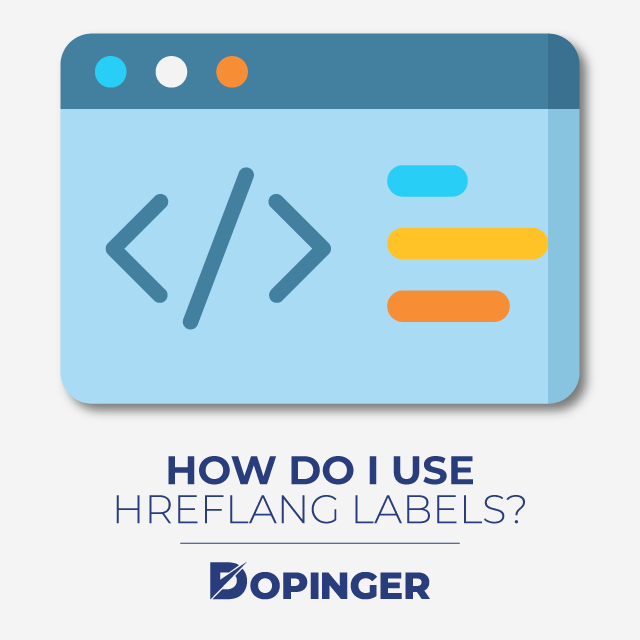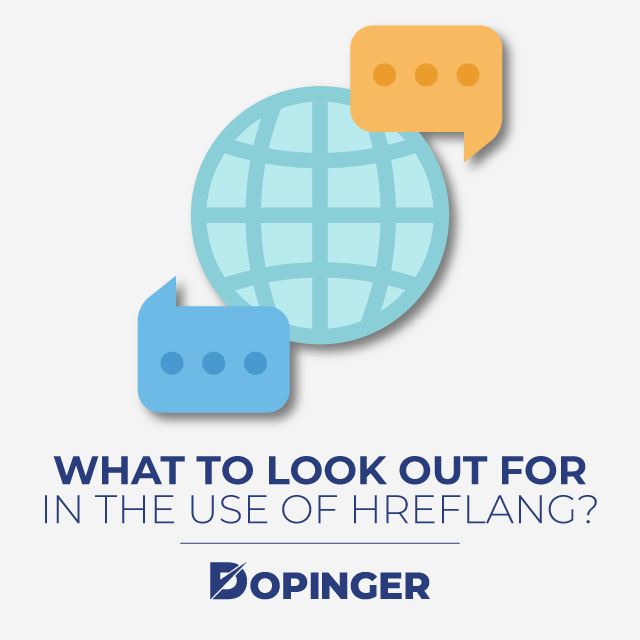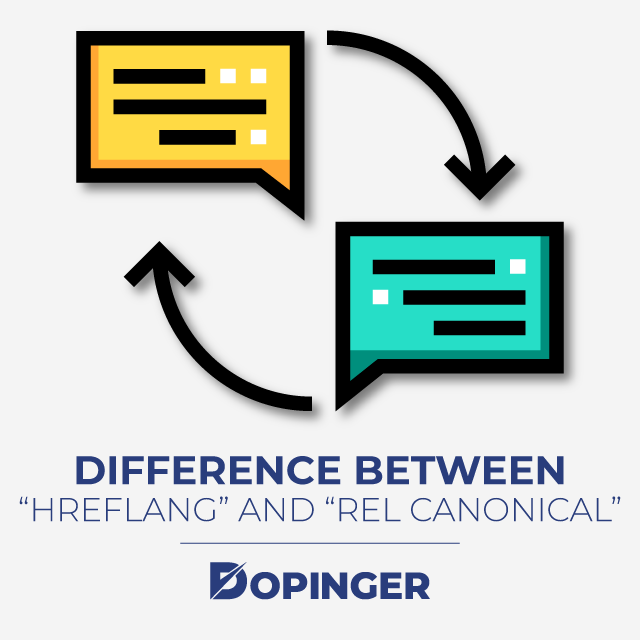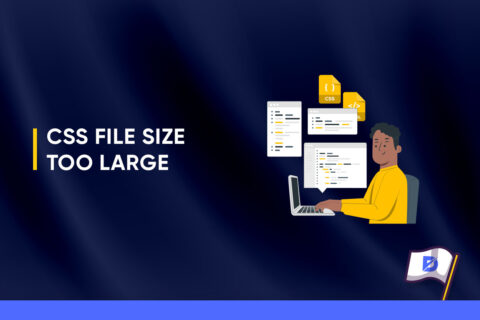With your website, the Hreflang tag is very important if you plan international targeting. One of the most important factors that Google emphasizes in the field of international SEO is Hreflang tags. If you place more than one language option on your site, you will have to use Hreflang labels correctly. But many websites make mistakes when using the Hreflang tag. So what is Hreflang? In this article, we will explain what the Hreflang tag is for International SEO and websites targeting worldwide and the correct use of this label.
Hreflang Tag
The Hreflang tag allows you to parse your similar but diverse content on your website, while also notifying search engines. It provides you to offer content targeting users in a particular region to users around the world. You must use this tag to gain visibility with the language and region URL you targeted in search results. In short, the Hreflang tag is labels that you can use to distinguish pages that offer the same content as different language and region targeting.
If you have a site with many language options, you should use the Hreflang tag. But when using this label, you have to be very careful. Although it may seem like a simple situation, misusing it is a serious mistake. According to SEMrush’s survey of 20,000 websites, almost 50% of websites use the wrong language code, such as the UK or ENG, rather than EN!

How Do I Use Hreflang Labels?
Using Hreflang Tags is sectioned in three areas such as HTML Code, HTTP, and XML on the sitemap.
It would be more accurate to choose only one of the above when the application was made.
Now let’s see how you can use the label.
For instance, suppose you have a registered business in Italy. But you work with England and France. You translated the English and French pages that you created to reach your audiences in different countries. This post-edit now has three different versions of all pages on your site which are Italian, French, and English.
If you don’t use a Hreflang tag, the search engine might think you’ve created all of the pages above for Italy, or you can detect pages as duplicate content.
To correctly configure all pages on the site with the language selection and region-based Hreflang, we must also add the following sample tags in the 3 versions of your page.
< link rel = “alternate” hreflang = “it-IT” href = “http://websitename.com/pagename.html” />
< link rel = “alternate” hreflang = “en-GB” href = “http://example.com/en/pagename.html” />
< link rel = “alternate” hreflang = “fr” href = “http://example.com/fr/pagename.html” />
Also, Google asks you to specify the default version of your page for users who will log into your site in this region or from abroad:
< link rel = “alternate” hreflang = “x-default” href = “http://websitename.com/pagename.html” />
Certainly, a country code alone is not a problem. It is very important to know that you can specify a language. Let’s talk about the three things you need to dig into your mind:
• You can specify language targeting alone.
• You can specify language and country.
• You cannot specify only one country code.
HTTP Header Description Field Usage
Another method is the HTTP comment field. You can also present the Hreflang tag in the HTTP Header field, apart from HTML.
Here’s an example of how you use it:
HTTP/1.1 200 OK
Content-Type: text/html
Link: <http://websitename.com/en-us/page.html; rel=”alternate”; hreflang= “en-US”
Content-Length: 5710
Pages Containing Too Much Translation
This method, which is not used by many people in general, is for sites that contain too many translations. For instance, if you have dozens of pages on different languages, adding the relevant codes to HTTP descriptions and HTML code can degrade your page’s performance! Google recommends the use of an XML sitemap for these situations. The following is an exemplary structure for this method, which is extremely simple to use.
<url >
< loc > http://example.com/page.html</ loc >
< xhtml: link rel = “alternate” hreflang = “tr-TR” href = “http://websitename.com/pagename.html” />
< xhtml: link rel = “alternate” hreflang = “en-GB” href = “http://websitename.com/en/pagename.html” />
< xhtml: link rel = “alternate” hreflang = “fr” href = “http://websitename.com/fr/pagename.html” />
< xhtml: link rel = “alternate” hreflang = “x-default” href = “http://websitename.com/pagename.html” />
</ url >
Above all, the sitemap that you create through the template above will run smoothly. When this method is applied, you do not need to use the other 2 methods. For more detailed information, see Google’s https://support.google.com/webmasters/answer/2620865?hl=tr document.

What to Look out for in The Use of Hreflang?
• Country codes and language codes should not be stretched.
• First you must specify the language and then the country and not confuse the ranking.
• If the Canonical tag marks a different page, you should not apply a Hreflang label to this page.
• You can use the language label alone, but you cannot specify the country code. Therefore, “Language and Country” or “Language” codes must be found.
Codes Show the Wrong Page
The most important of most mistakes that most people make in the use of the Hreflang tag is that the codes show the wrong pages. So it’s a big mistake that the page you want to show doesn’t include the Hreflang tag. For instance, If you’ve added a Hreflang tag to a page, and you’ve shown other formats of the page in additional languages, you’ll need to add a Hreflang tag to these pages, or their format in additional languages. Otherwise, even if search engines detect the page, Hreflang may find it difficult to detect or even detect which language the label is in due to its lack or no.

The Difference Between “Hreflang” and “Rel Canonical”
The label “Rel Canonical” allows us to specify which link spiders will base as a result of the search engines reaching the same content with two different link structures. On the other hand, Hreflang is a tool that helps us show different pages in a search and tell search engines what pages to show by language and region. Google recommends that you don’t use a rel canonical between country or language versions on your site. But you can still use it for the country and language version!
X-Default and General Targeting
If your Page offers content in a variety of languages, or if it wants a user to select the page between preferences, you can use the x-default value to show that the page is not specifically targeting a language.
Conclusion
In this article, we explained Hreflang was. You can target internationally with the Hreflang tag. There is also a chance for you to provide your content and services to users living in different geographies. You can also offer them your content and services by targeting users who speak the same language in different geographies. Moreover, if you are targeting internationally, you should use the Hreflang tag in full and accurately. If you are using or using this tag, it is worth using its tools to detect errors.
If you liked this article and want to learn more about such software topics, please have a look at our other articles about it. You may also like, what is .Htaccess.
Frequently Asked Questions About
You may find a new meta box called Hreflang tags on the post edit panel. First, you need to include the URL of the post you are currently editing, and then pick the language. Before that, you need to press the plus button to connect Links to certain post variants and their text.
If used in combination with the media attribute, rel-alternate implies a connection to the edition of the current text, in particular to the system or medium defined by the media attribute.
The necessary rel attribute defines the connection between the current document/resource. The < link > element creates a link between your HTML document and your external resource. The rel feature determines the connection between the two records. Further, search engines can often use the details in the rel attribute to decide whether to index or view a document.





No comments to show.